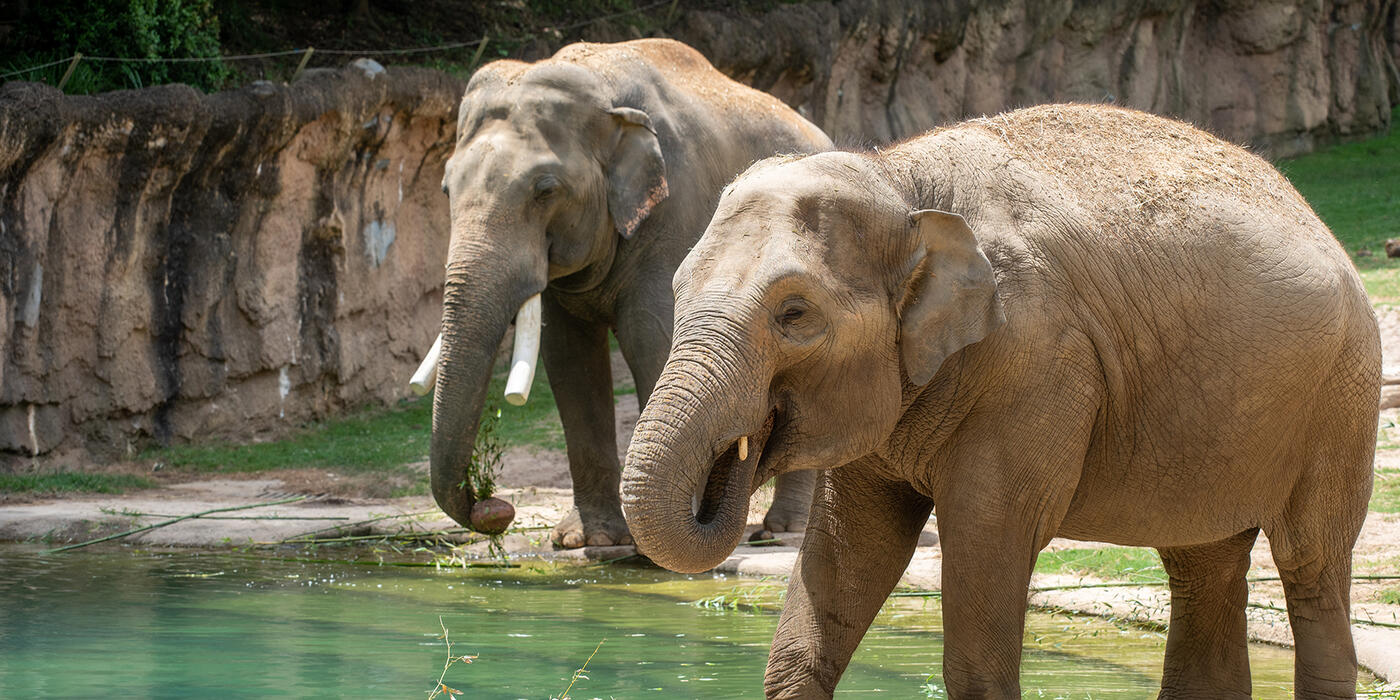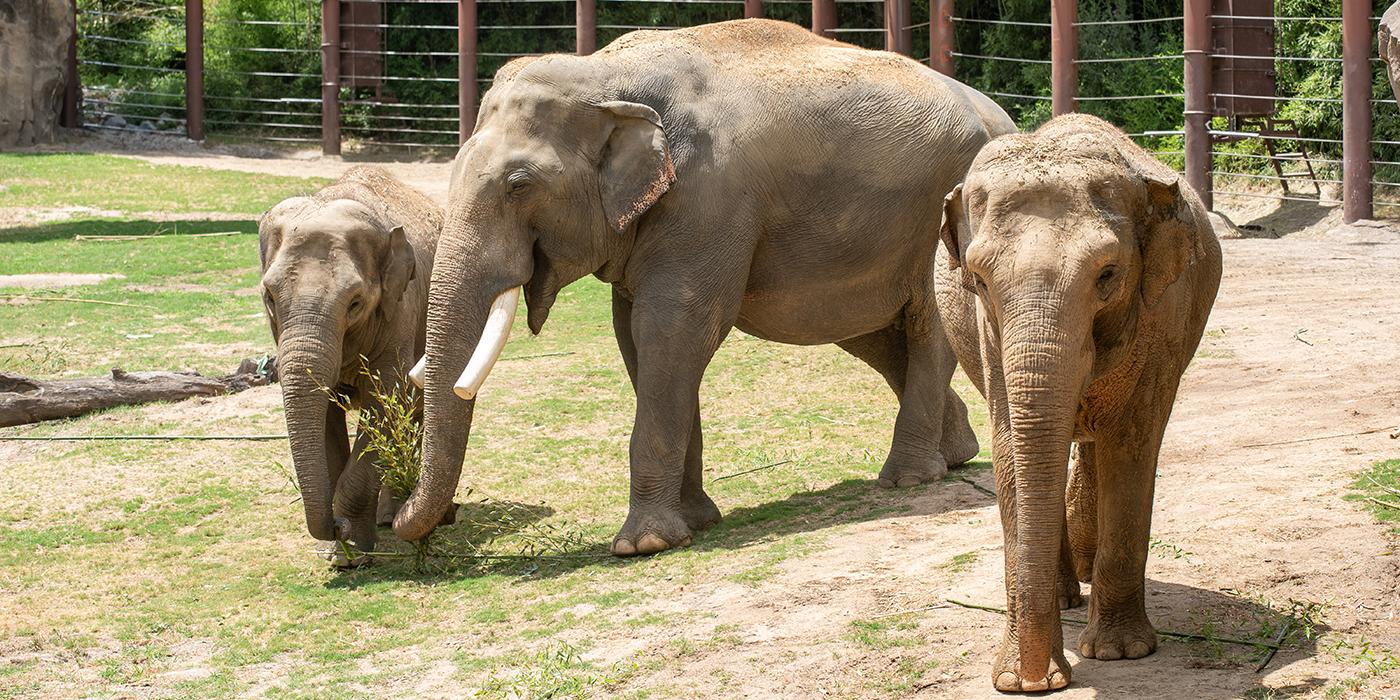How to Care and Feed Elephants, Sloths and More
Problem-Solving Animals’ Nutrition Needs
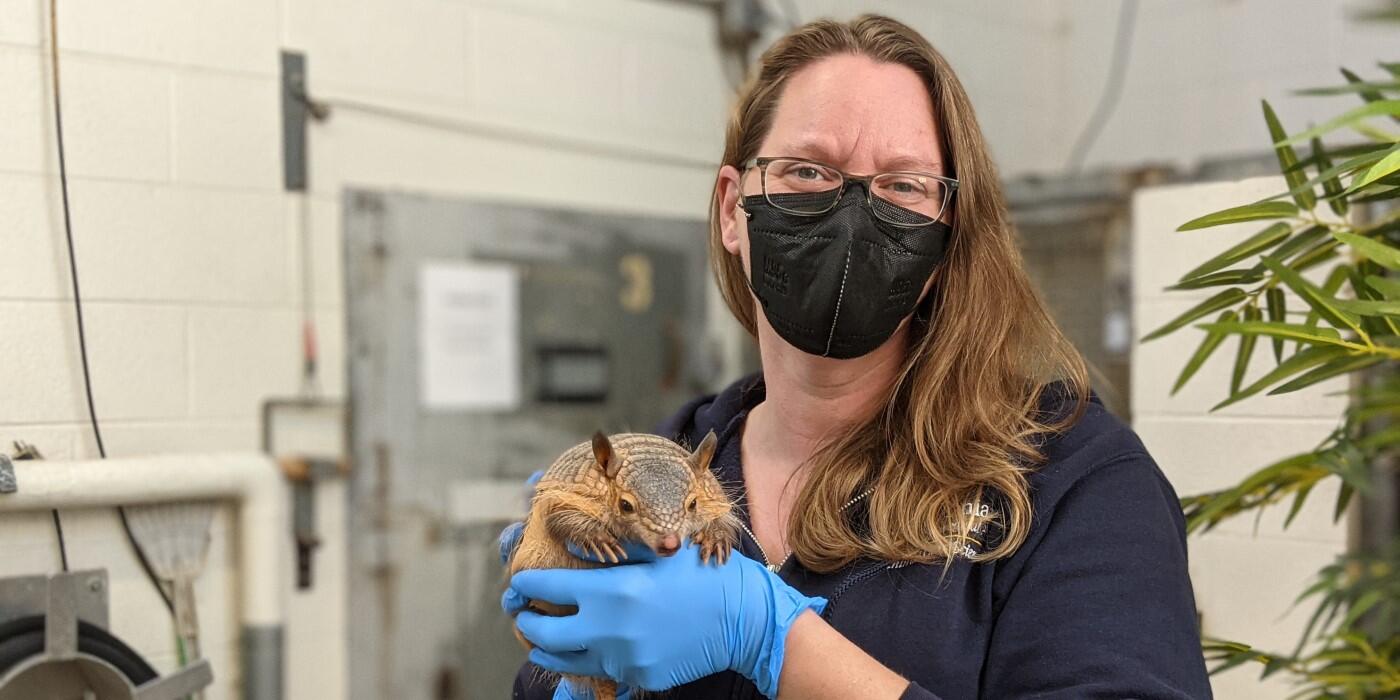
Food for thought: Nutrition forms the foundation to living a healthy life. Get a taste of the challenges real-life Zoo Guardian and Clinical Animal Nutritionist, Erin Kendrick, faces as she formulates diets for all animals at the Smithsonian’s National Zoo.
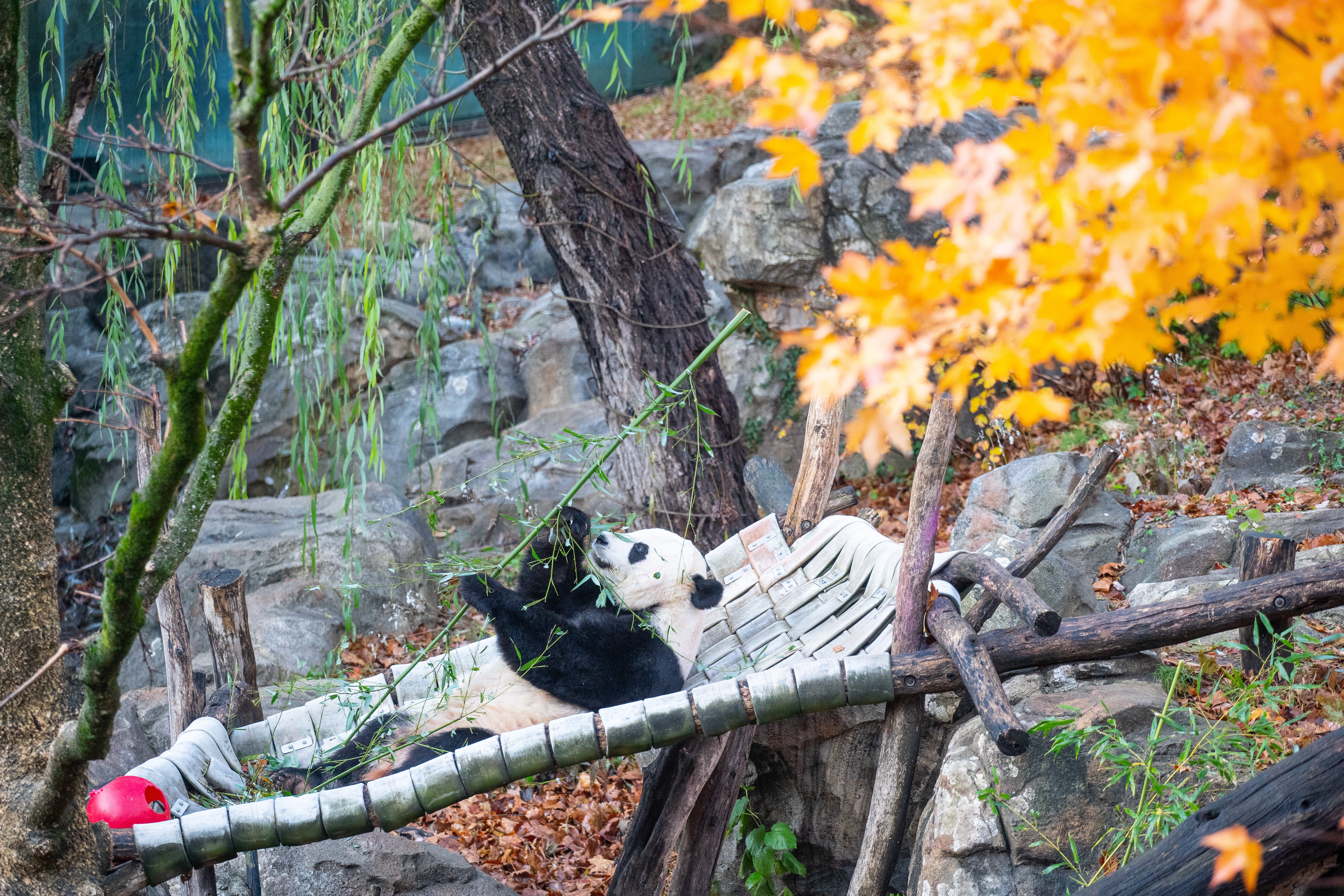
Just like nutrition creates a basis for an all-around healthy life, being a zoo nutritionist is an all-around job. I plan the diets for every animal at Smithsonian’s National Zoo, from our largest elephant to our smallest frog. To allow each animal to maintain the correct body condition, I ensure they receive an appropriately formulated diet. This includes working with the Zoo’s curators, keepers and veterinarians to modify diets when a clinical issue arises, and with the commissary staff to ensure we have the necessary “ingredients” for each diet and they are prepared correctly.
Zoo professionals have a lot of responsibilities they need to attend to daily, so having a nutritionist on staff ensures there is focus on formulating the best diet for each of their animals. Zoo nutritionists are also trained to approach the diet from a scientific viewpoint; it’s not about recreating the diet they might have in the wild but balancing each diet to meet the nutritional needs appropriate for all 2,700 animals in our care.
A key component to understanding an animal’s health is to routinely monitor fat stores. For mammals, several birds and some reptiles, we can do this with a quick body score system. The scoring system is on a scale of one to nine, where one is emaciated and nine is morbidly obese. Ideally, most animals would score within the four to six range.
To obtain a body score, I run my hand over an animal’s bony areas – its spine, ribs, shoulder blades and the points of the hips – comparing what I’m feeling to specific descriptions for each score to make an objective assessment of the amount of fat over those body parts. As I’m feeling each, I ask myself: ‘Can I feel the bone without pressing too hard? How much dip is there between individual ribs? Can I feel the spine and hip points, and do they feel rounded and not sharp?’
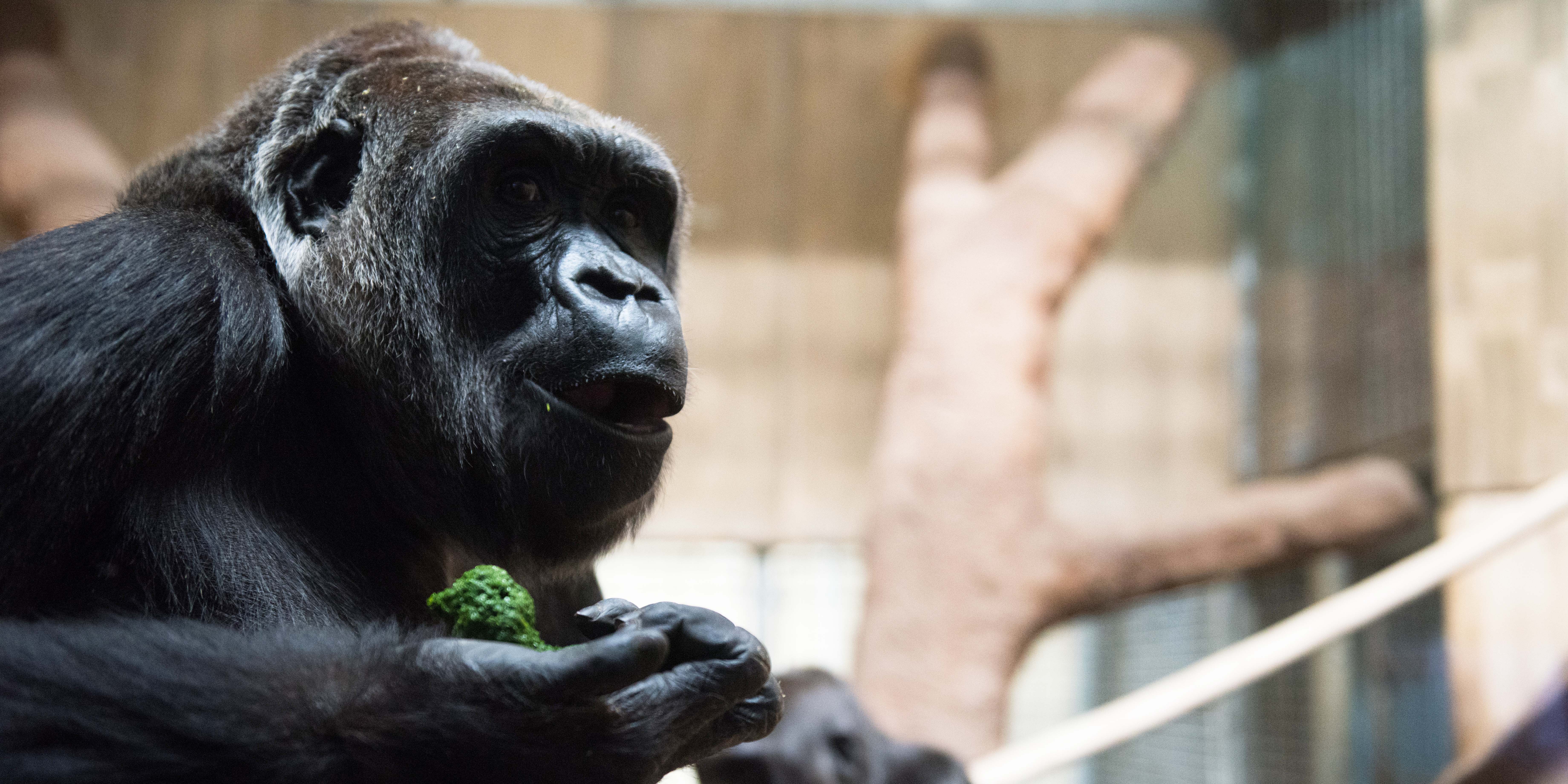
Some of the Zoo’s animals are too dangerous for Erin to touch while they are awake, like the gorillas. Instead, she does a body score whenever they are under anesthesia for a medical exam.
If an animal scores between seven and nine, those bony structures start to disappear and I have to press harder to find them. On the other hand, if an animal scores between one and three, I can sometimes see the bone before I even touch. If that is the case, the bones usually feel sharp or pointy.
Each number has a specific description to help me determine and assign the most appropriate score. The description for each score varies by species. We have scales for many of our animals, but not all of them. If we do not have a scale for one species, I can sometimes use one developed for a similar species.
Turtles have their own scoring system because of their shell. Songbirds and shorebirds also have modified scoring systems — called a “fat score” — because of their seasonal weight change associated with migration. Amphibians, fish and some smaller reptiles pose a challenge because they may lay fat down in different parts of their body. Together with the keepers and scientists who work these animals daily, we have started to figure out some indicators, but there’s still so much to learn.
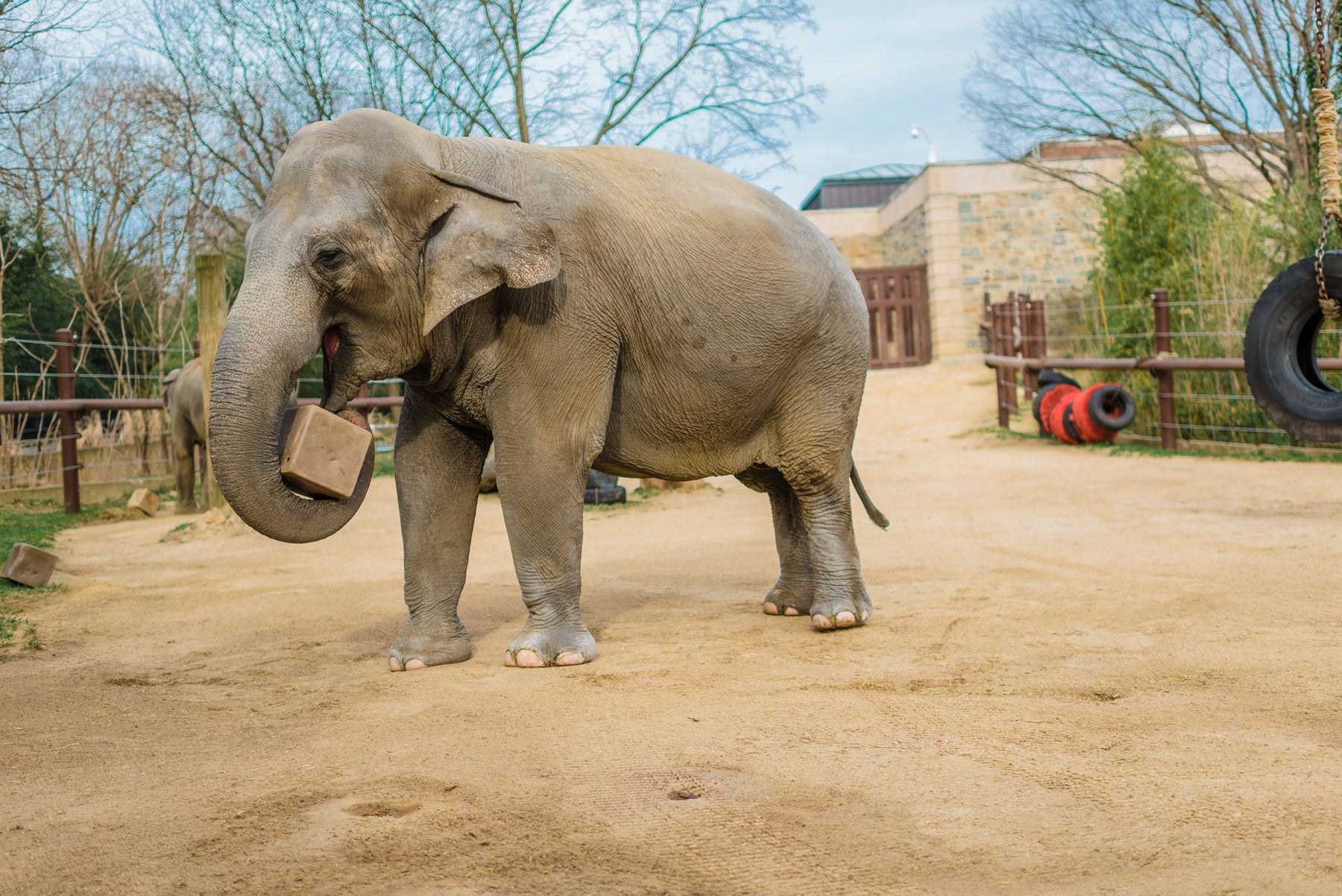
Elephants are another special case. I can’t assess them the way I do other animals because their skin is very thick. Instead, we use a visual score that looks at the same points I would touch but matches pictures with the text descriptions. Elephants also pose an additional challenge since they are herd animals and all have access to the same hay, which is the bulk of their diet.
When our female Asian elephant, Bozie, arrived at the Zoo in 2013, she scored in the 8 to 9 range on the body condition scale. While she was in quarantine, we transitioned her off the food she received at her previous institution and onto the diet we feed our elephants. This included a change in the type of hay and pellets, and an adjustment in the proportion of fruits and vegetables. Once she fully transitioned to her new diet, our goal was to make systematic decreases to help her to lose the excess weight.
On the other end of the spectrum, we had a geriatric female Asian elephant, Ambika. She tended to be on the lean side, so we gave her a special, chopped hay with more calories to help maintain her body weight. It was great for her and she maintained appropriate body condition until her death in 2020.
Between Bozie’s release from quarantine and Ambika’s death, they lived together in a small herd with another female. This posed a problem diet-wise. As I mentioned previously, the entire herd eats the same hay. Ultimately, the elephant team and I decided it was more important to maintain their social structure and keep Ambika at a healthy weight because she had the most limitations in the group setting.
After Ambika passed, Bozie was transitioned back to the Zoo’s normal hay, which has less calories. At her highest, she weighed close to 9,500 pounds (4300 kilograms). Within the last year and half, she lost all the extra weight. Her current weight is about 7,900 pounds (3600 kilograms) and she recently scored a 5 out of 9!
Mixed species exhibits also create challenges, since different species have different diet restrictions. For example, two of our southern two-toed sloths and a green aracari share an exhibit with our golden lion tamarin family in the Small Mammal House. Golden lion tamarins require a higher level of vitamin D in their diet; if they do not get enough, they could develop muscle weakness and osteomalacia (soft bones), among other issues. However, the vitamin D level they require is so high, it can be toxic to other species. Additionally, we removed fruit from the tamarins’ diet because the level of sugar was too high.
The solution is where and how we feed them. The special tamarin food with the high vitamin D is cut into very small pieces — perfectly sized for a tamarin but too small for a sloth to grasp — and is placed in a space the sloth and aracari cannot reach! To prevent the tamarins from stealing the other animal’s fruit, we adjusted the sloth and aracari diets to remove fruit, which is more appropriate for them as well. Sloths also only eat in the afternoon, so by only putting the sloth food out when they are ready to eat further minimized the chances of the tamarins stealing from the sloths.
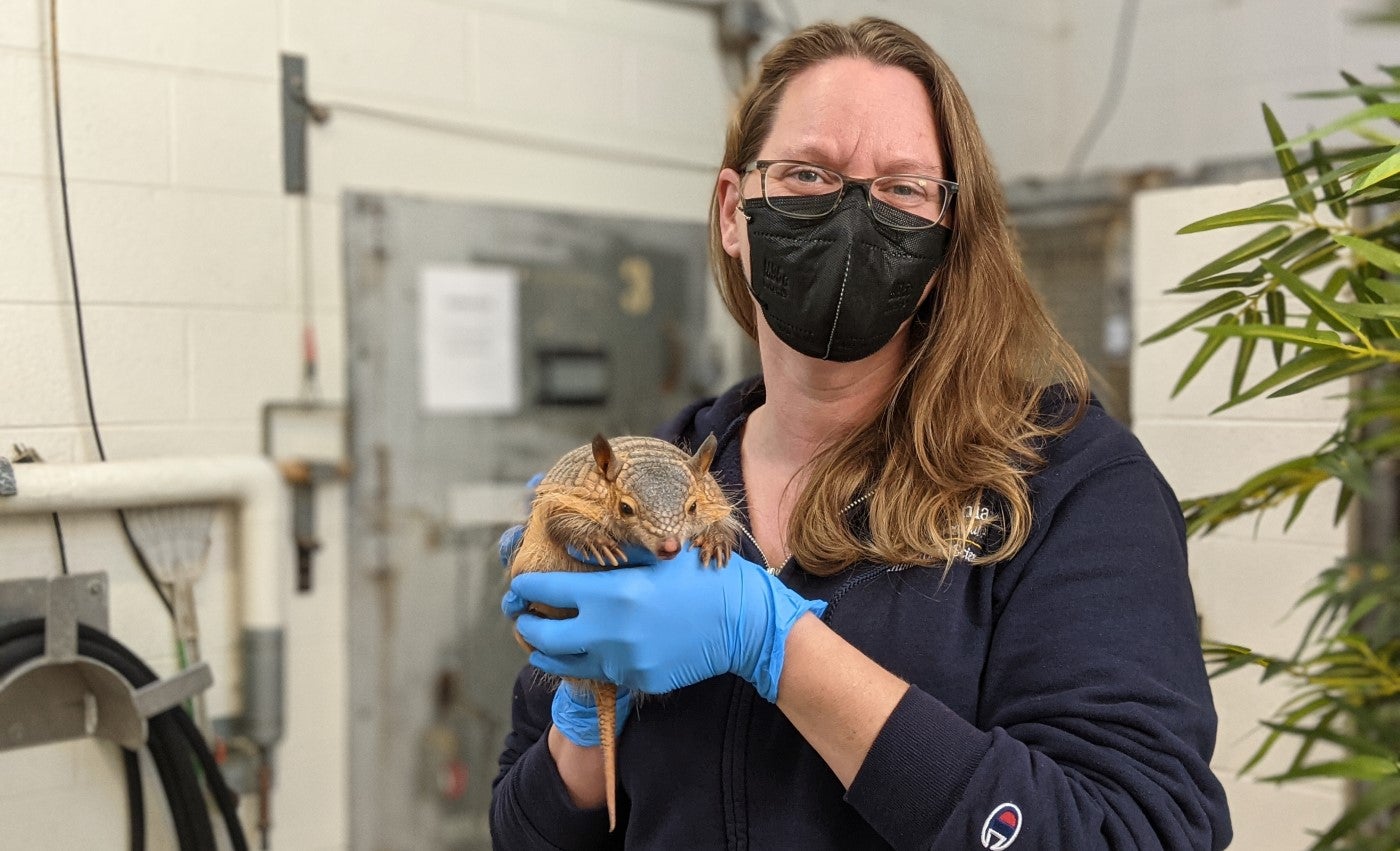
Another unique challenge we occasionally face comes when we hand-raise an animal. While it is always preferred for a mother to raise her young, we are prepared in case a mom is unwilling or unable to care for them. In the case of our screaming hairy armadillo pup born in 2018, his mother stopped producing milk. With the help of the Zoo’s milk repository team, we developed a supplemental milk formula, and Small Mammal House keepers hand-raised the pup.
It was one of those situations where the pup was behaving normally, but he wasn’t growing or defecating as expected. Developmentally, we were missing something: enough calcium. Armadillos’ shells grow as they do and require a much higher level of calcium than other species. In addition to providing building blocks for growth and energy in carnivores, milk protein acts as a carrier for calcium. So, it made sense to find that armadillo milk is really high in protein and calcium. After a couple modifications to our milk formula, it was like a switch turned on. The pup defecated properly and started growing and forming his shell as normal! Sherman is still in Small Mammal House today, and he’s the perfect screaming hairy armadillo.
That’s only a small taste of the challenges I face. For anyone curious about zoo nutrition, keep in mind no zoo nutritionist got to where they are today because of a specific path. There are a lot of different ways to get into this field, so do your research and network! Right now, not every zoo has a nutritionist on staff. But the field is growing, so do not give up!
